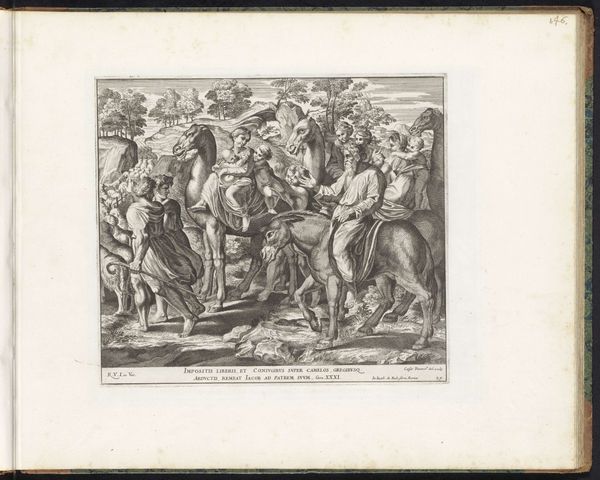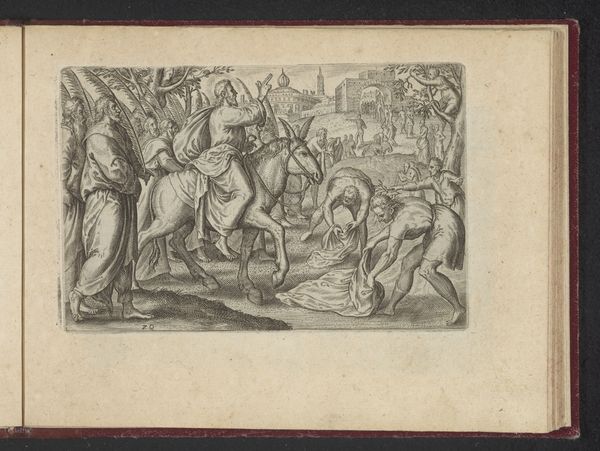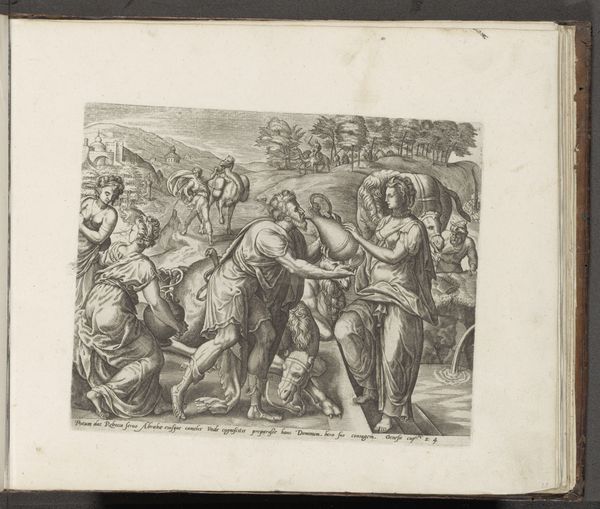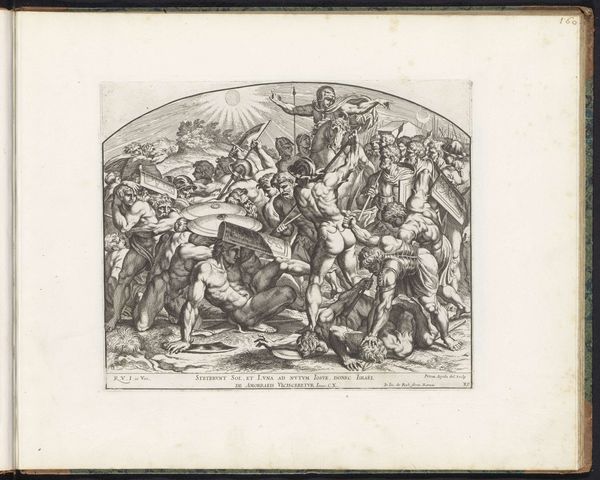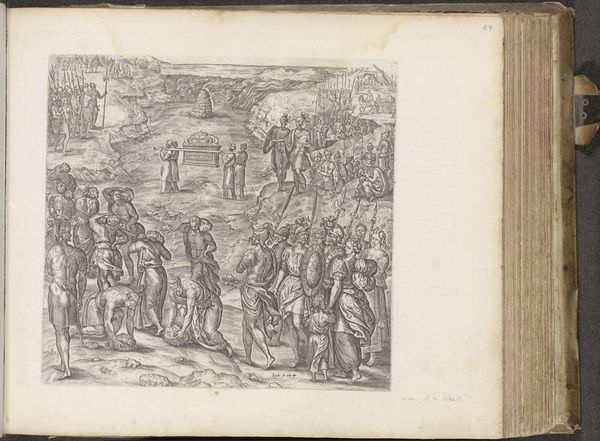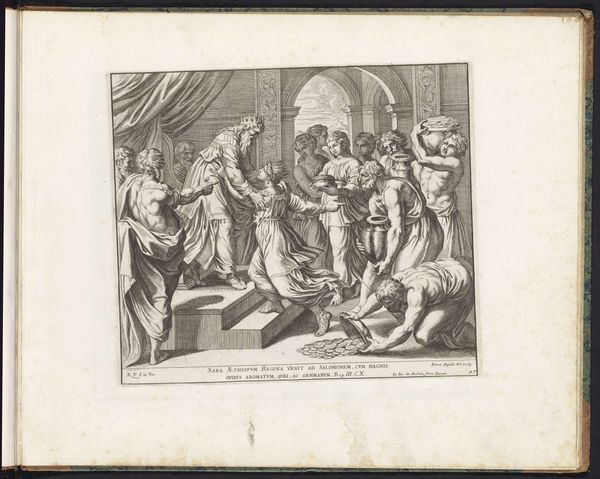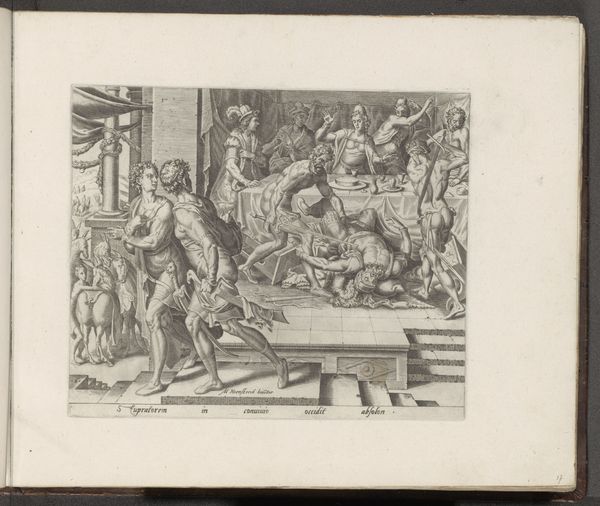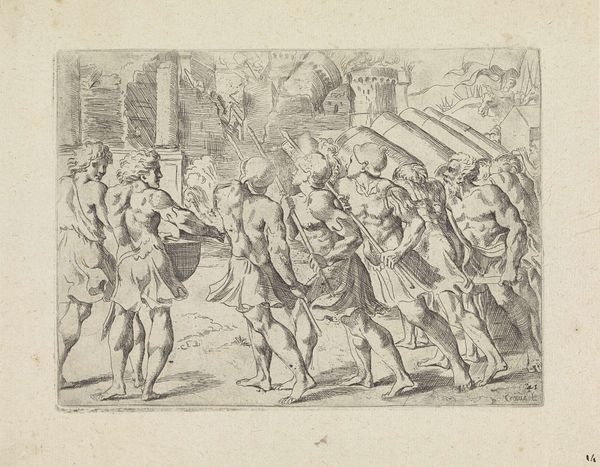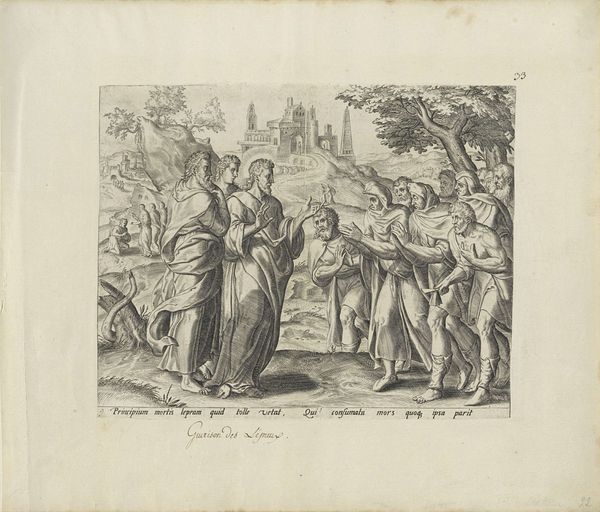
print, engraving
#
narrative-art
#
baroque
# print
#
figuration
#
history-painting
#
engraving
Dimensions: height 254 mm, width 290 mm
Copyright: Rijks Museum: Open Domain
Editor: This is Pietro Aquila’s 1675 engraving, "David keert in triomf terug naar Jeruzalem," or "David returns to Jerusalem in triumph." It's full of muscular figures and feels very dynamic despite being a static print. What symbols do you find most striking here? Curator: It’s fascinating how Aquila translates triumph into visual language. Notice David in his chariot; he's crowned, set apart, but his gaze avoids the viewer. What emotions do you think that downcast look might convey amidst this fanfare? Is it humility, perhaps a sense of burden? Editor: That's a great point! I hadn’t considered that contrast. I was mostly drawn to the powerful horses and the soldiers. Curator: Yes, consider how the figures, the horses—symbols of power—are actively pulling and pushing. They propel the narrative, embodying the active forces of history. Look, too, at the severed heads carried as trophies. What cultural memories are being invoked here? Editor: Something about claiming victory...a show of force, absolutely. A warning, even? Curator: Exactly! It's not just a victory procession; it’s a carefully constructed image designed to instill awe, fear, and a specific understanding of power dynamics. Note how the procession seems to emerge from a dark wood -- a metaphorical suggestion of both concealment and violence lurking just beyond the city's threshold? Editor: That's incredible -- a potent reminder of how victory can have a darker, more complicated side. Curator: The enduring power of visual symbols lies in their ability to condense complex ideas into accessible forms, prompting us to look deeper. Editor: Absolutely! This has given me a totally new perspective on how to read beyond the surface.
Comments
No comments
Be the first to comment and join the conversation on the ultimate creative platform.
